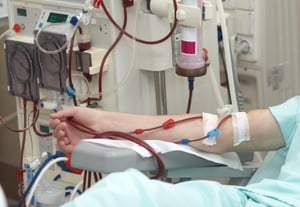Is Surveillance Valuable: A Critical Review
By Susan Eymann, MS11 Mar 2019
As the value of surveillance in managing vascular accesses is undergoing scrutiny, a critical review by distinguished leaders in the field including Drs. A Besarab, A Asif, P Roy- Chaudhury, LM Spergel and P Ravani responds to the skepticism about access surveillance.
Chaudhury, LM Spergel and P Ravani responds to the skepticism about access surveillance.
They stress that tests to determine the functionality of AV accesses are valuable. They say that a reduction in thrombotic events in patients who have undergone surveillance is a worthy endpoint of surveillance and reduces patient morbidity.
Drawing upon a bibliography of 86 references they examined:
- The scope of the problem in maintaining patency;
- The difference between clinical “monitoring” by physical examination and “surveillance” by methods such as pressure monitoring, indicator dilution, and Duplex ultrasound;
- The efficacy/value of monitoring and surveillance.
The reviewers concluded that:
- Most of the available evidence suggests that detection of stenosis and prevention of thrombosis in AV fistulas is valuable.
- When a test indicates the presence of a functionally significant stenosis, venography or fistulography should be performed to definitely establish the presence and degree of the stenosis.
- In most cases, angioplasty should be performed if the stenosis is greater than 50% by diameter.
- Stenotic lesions should not be repaired simply because they are present.
Reference:
Besarab A, Asif A, Roy-Chaudhury P, Spergel LM, Ravani P, “The native arteriovenous fistula in 2007. Surveillance and monitoring,” J Nephrol 2007;20:656-667. (Transonic Reference # HD7594A)




